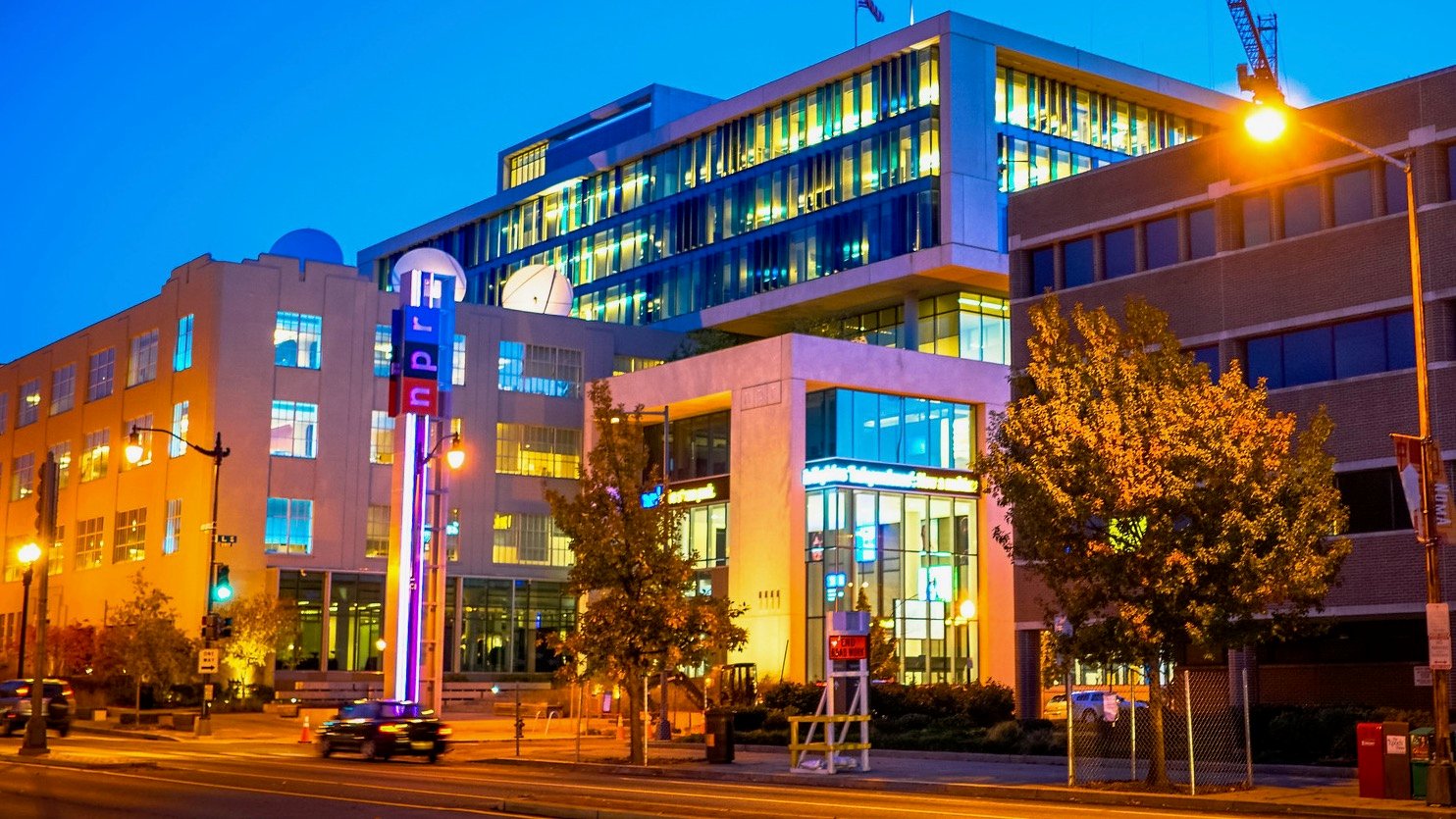NPR app for motorists gets radio from the Web as well as stations
Some new Ford cars will let their drivers shout “hourly news!” or “topics!” and choose public radio programming either on their local stations or through a smartphone streaming audio from the Internet.
Bringing in webcasts and on-demand streaming gives drivers a vastly greater range of listening options and could make it even easier for them to hear public radio without help from their local stations.
That ability is already within reach for drivers who have a smartphone and a cable or adapter to connect it to a car stereo. But coupling a smartphone with the new NPR app to Ford’s SYNC AppLink system may help popularize web audio listening, a scenario that dismays some pubradio station leaders.
Regardless, some station execs are also praising NPR for taking the lead as the first news organization to develop a dedicated in-car app that showcases its programming.

In an NPR promo, host Audie Cornish test drives a Ford with SYNC, a smartphone and an NPR app that lets her call up stories of her choice. Or Chicago Public Radio from the streets of D.C. (Image from NPR video.)
After installing the app on an iPhone or Android device, drivers with the Ford SYNC system will be able to connect it to their phones and call up stations and programs using spoken commands such as “hourly news,” “stations” and “topics.” Carl Kasell, former NPR newscaster and now scorekeeper on the network’s Wait, Wait . . . Don’t Tell Me!, serves as the app’s narrator, supplying drivers with humorous tips for navigating the options.
“Use the Topics menu to hear audio taken from all your favorite NPR programs on the topic of your choice,” Kasell says. “You’ll find my show, Wait Wait . . . Don’t Tell Me! under the NPR Should Be Ashamed heading. Just kidding.”
Upon activation, the app will first play the latest hourly NPR newscast, then switch to the nearest public radio station within range. Users of the app can also create playlists and listen to stations around the country, not just those within range of their FM receivers.
Automakers initially planned to offer public radio through platforms such as Stitcher and TuneIn, rather than a separate NPR app, according to Kinsey Wilson, NPR’s senior v.p. and g.m. of digital media. NPR approached them about the standalone option, Wilson said in a memo to station execs distributed via the A-Reps email discussion group last week.
“I’ve got to give them kudos for this,” says John Hess, g.m. of Boise State Public Radio in Idaho. “They’re the first on the block to do this. They’re ahead of the trends. That’s a nice thing to see.”
But the announcement, released Jan. 9 to coincide with the Consumer Electronics Show in Las Vegas, also stirred familiar concerns that listeners would shun local stations in favor of other programming. Station leaders have expressed such worries for years about other platforms, including satellite radio.
“The more NPR can push its signal out to the American people, the better,” says Ellen Rocco, station manager of North Country Public Radio in New York’s Adirondacks region. “I’m basically in favor of that concept.” But Rocco says that as NPR increasingly offers programming directly to listeners on new platforms, it should reduce the programming fees it charges stations.
“Why hasn’t NPR figured out how to raise money from these new platforms?” she says.
In his note to the A-Reps list, Wilson pointed out that the in-car app “opens up all kinds of opportunities for local programming to be integrated into the listening stream as stations get their audio content into the API,” referring to NPR’s application programming interface, the software switchboard that connects apps and websites with the network’s database of audio content.
“. . . [C]onsumer adoption will be gradual and there will be a lot of time for us to conduct further research and work with stations to hone the user experience and further strengthen the partnership between NPR and Member stations,” Wilson also wrote.
“Clearly they have access to stations’ streams very much in the center of their thinking,” says Steve Bass, president of Oregon Public Broadcasting in Portland. And listeners won’t want to bypass local stations as long as they can find strong local programming on them, he says.
Bass says that he has asked NPR to tweak how it labels stations for retrieval by the in-car app. Apps now in use identify OPB’s Portland outlet as KOPB, for example, but listeners more often refer to the station as “OPB” or “Oregon Public Broadcasting.” NPR is aware of the issue and plans to address it, Bass says.
Meanwhile, American Public Media announced last week that Marketplace programs and content from The Current, its Triple A station in the Twin Cities, will be made available via Slacker Radio, a Web/mobile platform for streaming and on-demand audio. Ford’s SYNC system has supported Slacker Radio since November.





